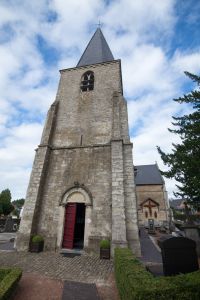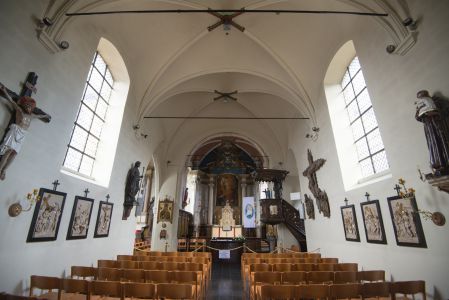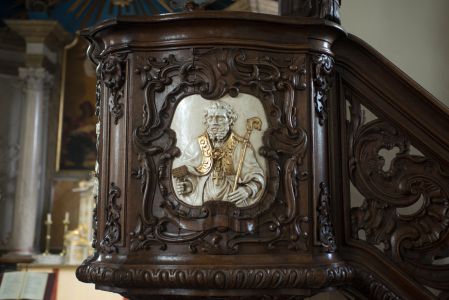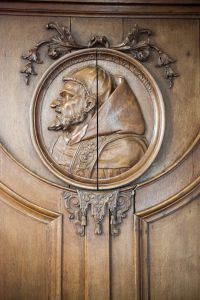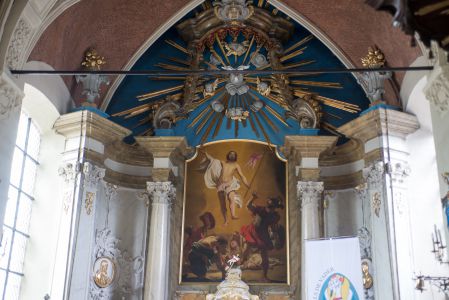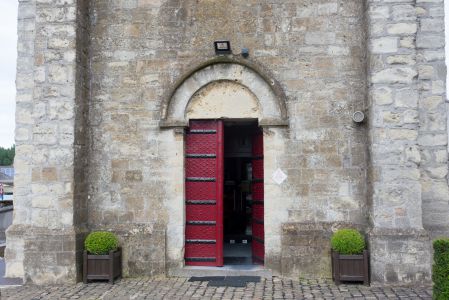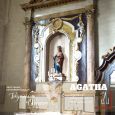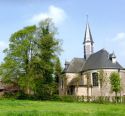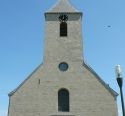Church | XII-XVII | Romanesque | Catholic Church



Map
Opening hours
01 January - 31 December
Mon 10.00 - 18.00
Tue 10.00 - 18.00
Wed 10.00 - 18.00
Thu 10.00 - 18.00
Fri 10.00 - 18.00
Sat 10.00 - 18.00
Sun 10.00 - 18.00
Guided tour
+32 9 632 32 61
Religious offices
Description
The first mentioning of this church goes as far back as 1155. The house of worship was at the time only dedicated to the Holy Blasius and was independent from the bishop of Kamerijk (Cambrai). According to a legend, a French princess suffering from an incurable chest complaint went to Saint Agatha, and out of gratitude for her recovery then went on to replace the chapel with a church in honour of this Saint. Landskouter remained under Kamerijk until 1559, then fell under the Mechelen diocese, and later under Ghent. Only since 1840 Saint Agatha became an independent parish.
It is a one nave cruciform church with three bays that constitute the nave. The remarkably robust western tower has three loopholes. The church was mainly built out of white-yellow sandstone from the pits of the Betsberg, on the border between Landskouter and Oosterzele. There probably stood from the 12th century onwards a late roman aisleless church which was subsequently extended and adjusted in stages. The sacristy in brick was added in 1897.
The entrance door with iron fittings, iron hinges and nails, leads to an evenly painted room with rib vaulting. The furniture is primarily in rococo style. The head altar carries the painting “Ressurection” by Jacob van Oost (18th century). The side altars are dedicated to both patron saints, Saint Agatha and the Holy Blasius. The confessional, the communion rails, the pulpit, the rood loft and choir stalls date from the 18th century and are made of oak. One is ought to take a close look at the five tablets in the communion rails on which Frans Hebbelinck depicted amongst others both patron saints and the Last Supper. The pipe organ (18th century) stems from Maldegem.
In the adjacent, renovated parish, cardinal Gustaaf Joos, a confidant of pope John Paul II, passed away. He once was a priest in Landskouter and was laid to rest next to the church.
KIKIRPA : Photo-library online
Photos
Remarkable elements
Van Peteghem organ
Our organ is an original Van Peteghem organ built by Pieter Van Peteghem and Sons in 1768. The Van Peteghems were a famous Flemish family known for their organ building. The organ of Landskouter is one of the best preserved Van Peteghem organs in the neighbourhood because it has never been renovated. The organ-case and the rood loft balustrade (1768) are made by Domien Cruyt (Ghent).Pulpit
The oak rococo pulpit in the Agatha Church dates from 1752 and is decorated with white and golden cartouches. In said pulpit, the holy Blasius of Sebaste, the holy Agatha of Catania and the Christ Pantocrator are depicted. The capricious veering soundboard is adorned with cut fake fabric. At the foot of this soundboard you can see a pigeon which represents the Holy Spirit in a wreath of clouds and beams. The curved staircase is lavishly decorated with rocailles and colutes.Calvary
The late gothic Calvary of 1601-1610 consists of a sculpture group of polychrome wood which depicts the crucified Jesus, flanked by John and Mary. The horizontal beam of the cross are decorated with lilies and leaf work medallions. On the junction of the horizontal beam of the cross, the Adoration of the Mystic Lamb is depicted.High altar
The high altar of the church dates from 1750-1799 and was made by Frans Hebbelinck. The ensemble consists of an altar slab, on which there’s a lavishly decorated tabernacle, which is crowned by the Adoration of the Mystic Lamb. ‘’The Resurrection of Jesus’’, a painting by Jacob van Oost (1603-1671) hangs over the altar. Presumably, it was painted between 1651 and 1671. It’s flanked by Corinthian columns and busts of the holy Agatha and Blasius. All of it is crowned by a canopy decorated with volutes, and a dove that represents the Holy Spirit.Agatha altar with saint Agatha sculpture
The northern side altar is dedicated to Agatha, the patron saint of the church. The classicistic porch way altar was established between 1775 and 1799. Above the tomb is a sculpture of the holy Agatha, flanked by chamfered Corinthian columns. The sculpture dates from the 16th century and is made of polychrome wood.Stations of the cross
The 19th century Stations of the Cross is a terracotta sculpture that has been painted and gold-plated. It consists of 14 parts altogether.Sainte Agathe / Dames de choeur - campagne 2021
Agathe est invoquée pour se protéger des tremblements de terre, des éruptions volcaniques et des incendies. Mais pourquoi ?
Selon la légende, à la suite de son décès, la ville de Catane en Sicile dont elle provenait, se mit à trembler. Elle est décédée des suites des tortures qu’on lui a infligées après avoir refusé d’épouser le proconsul de Sicile au au IIIe siècle : Quintianus.


